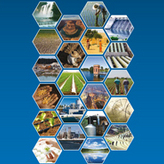
Economic frameworks to inform decision-making
Growing competition for scarce water resources is a growing business risk, a major economic threat, and a challenge for the sustainability of communities and the ecosystems upon which they rely. It is an issue that has serious implications for the stability of countries in which businesses operate, and for industries whose value chains are exposed to water scarcity.
Charting our water future: Economic frameworks to inform decision-making shows that while meeting competing demands for water will be a considerable challenge, it is entirely possible to close the growing gap between water supply and demand. This report provides greater clarity on the scale of the water challenge and how it can be met in an affordable and sustainable manner.
The report offers case studies from four countries with drastically different water issues, which will collectively account for 40 percent of the world’s population, 30 percent of global GDP and 42 percent of projected water demand in 2030: China, India, South Africa and Brazil. The report’s methodology identifies supply- and demand-side measures that could constitute a more cost effective approach to closing the water gap and achieve savings in each country.

Comments by our Users
Be the first to write a comment for this item.